This is the fourth in a series of posts on the Sony a9. The series starts here.
I’ve been asked to look into the digital lowpass filtering in the Sony a9 as a function of exposure time, to see it it has the same “star-eater” filtering beginning as 4 second exposures that was introduced to the a7RII with firmware 3.30.
First, I lo0ked at read noise in general as it relates to exposure time, with electronic shutter on, at ISO 1000, and no lens attached:
You can see a suspicious drop right at the transition from 3.2 to 4 seconds. By the way, the gap on the left is because the a9 has no exposure time settings between 1/32000 second and 1/16000 second.
Let’s take a look in the spatial frequency domain at the 4 second exposure to see if we observe the low-pass behavior that is a telltale sign of star munching:
Yes, indeed. The a9 eats stars. But what’s going on with the ripples in the horizontal direction? Let’s look at 3.2 seconds: By the way, f is the frequency, fs is the sampling frequency, so f/fs equal to a half is the Nyquist frequency.
Yes. Even though the vertical direction shows only a small droop with increasing frequency,
At 1 second:
At 1/30 second:
At 1/125 second:
At 1/1000 second:
Looks like the a9 does that all the time, at least in electronic shutter mode. I’ll have to test the mechanical shutter.
The noise is low, so should the patterning indicated by the frequency response plots. What’s it look like? here’s a tight crop of the red channel (which was used for the above graphs), show at about 200% and brutally treated with curves in Photoshop:
There is some patterning visible, but it’s not particularly objectionable to my eyes.
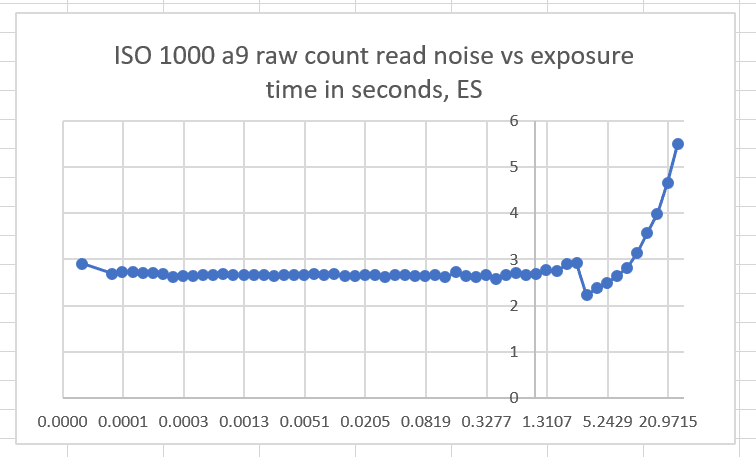
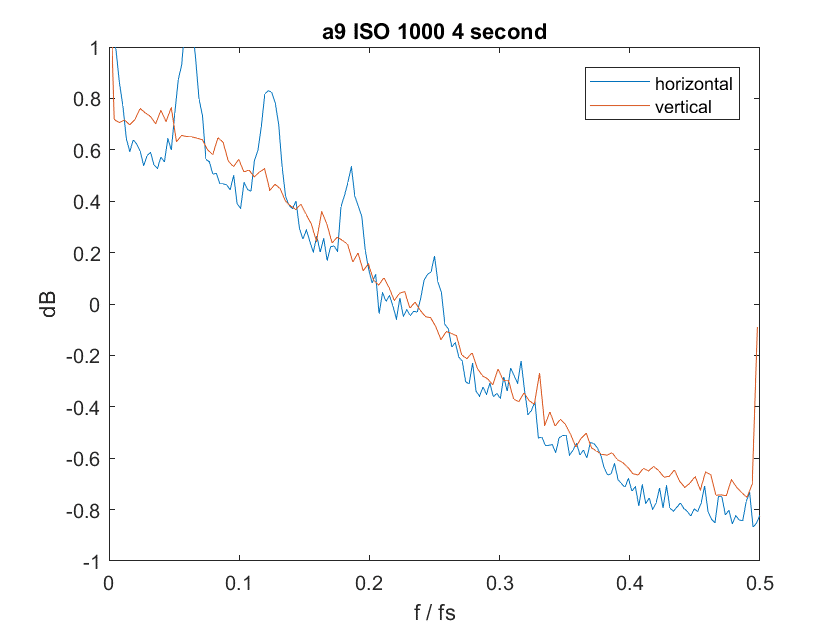
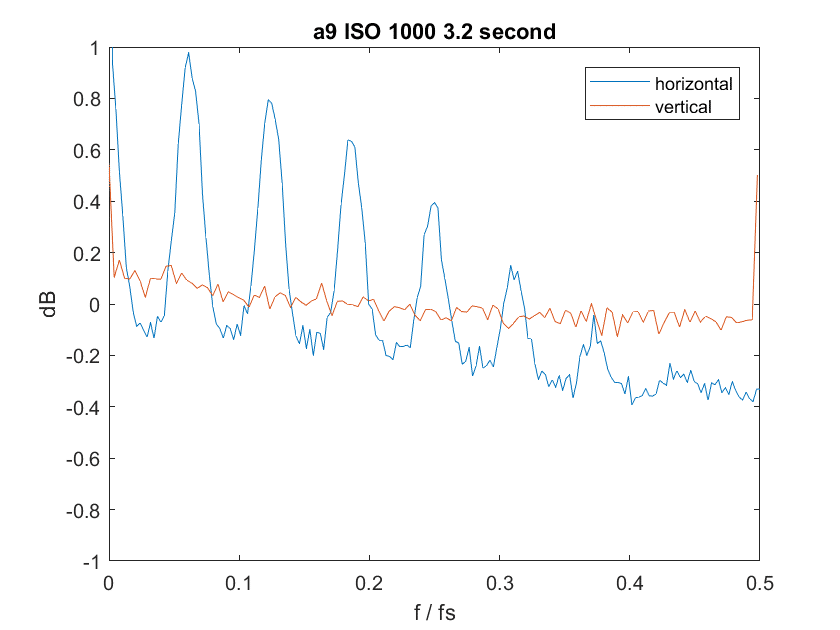
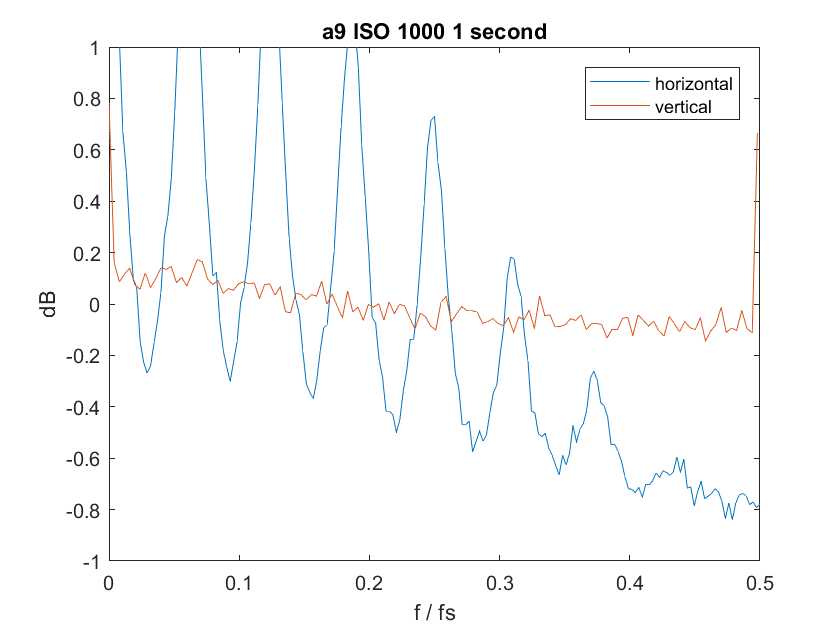
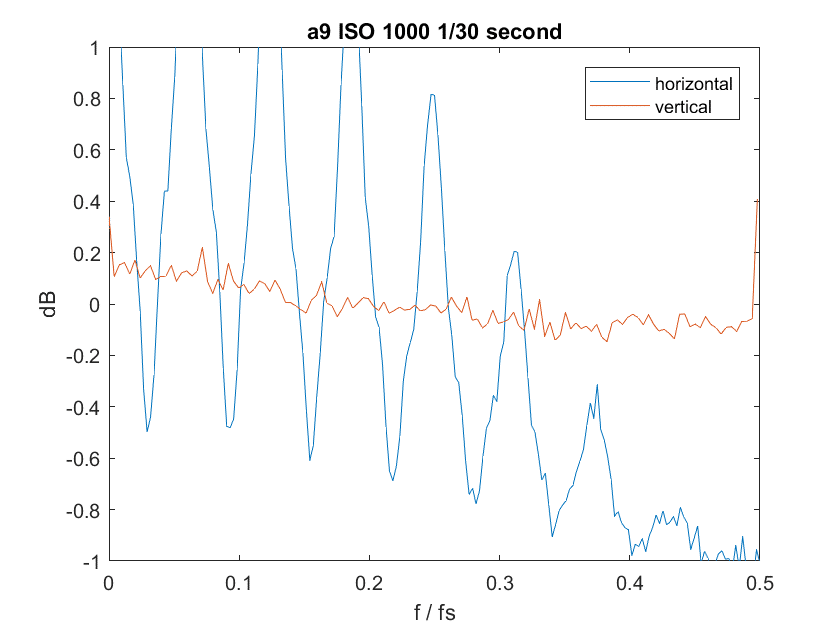
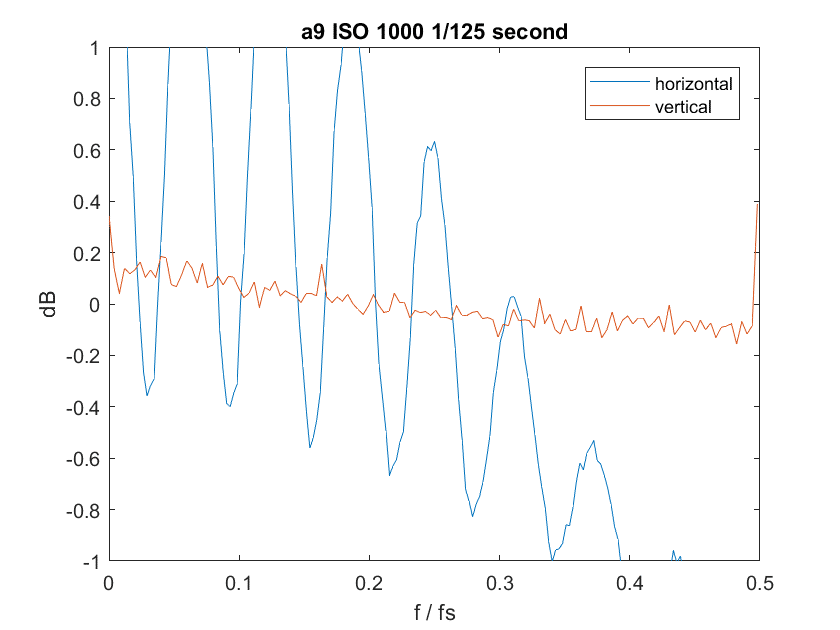
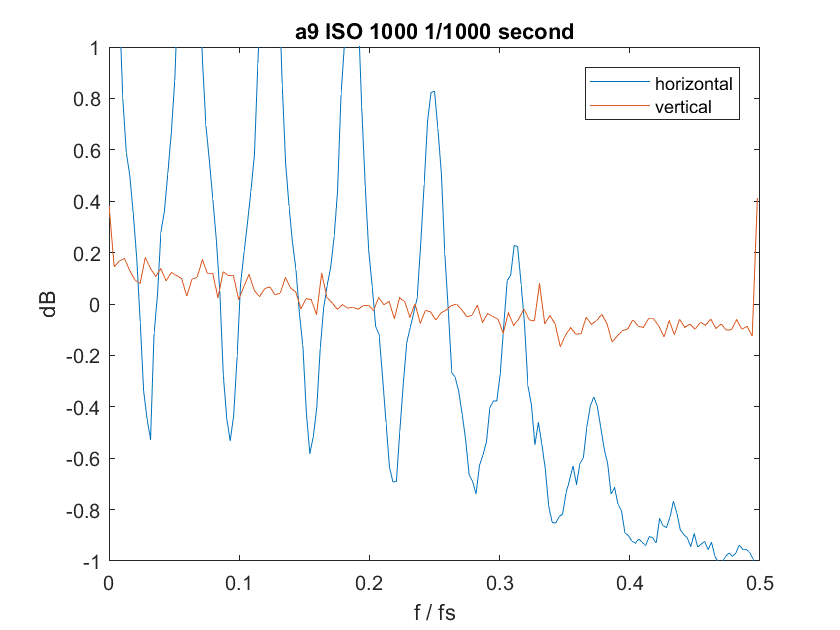
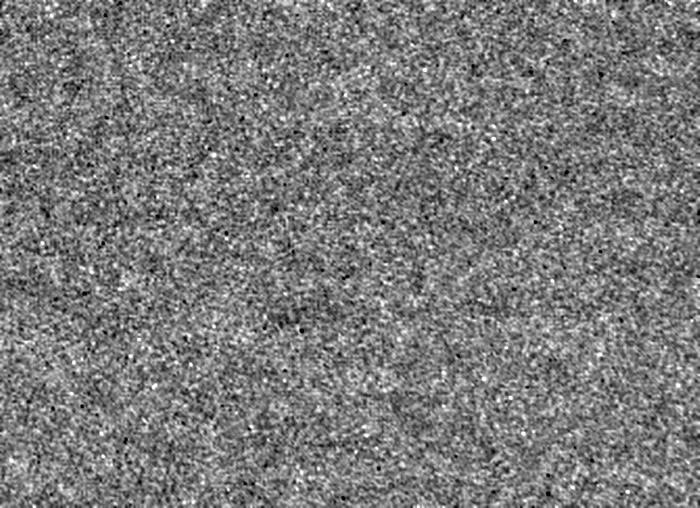
John Leathwick says
Thanks for doing this – It might seem odd, but as an A7RII user, I’m relieved that Sony have applied their median filtering in the A9 just the same as it is in the A7RII and SII. This hopefully means that there will be even greater pressure for them to release firmware updates that solve this issue for everyone – my fear was that they would have removed it on the A9, and left A7RII and SII users marooned in an astro-shooting dead-end.
-John
Ari Aikomus says
Jim, check this:
“…The conclusion: Sony star-eater reduces the number of detectable stars in this equivalent images by 167 or by about 26%”
https://www.dpreview.com/forums/post/59658425
Ian Norman says
Jim,
A purported Star Eater fix may have been issued for the a7RII or a7SII. (New firmware v4.00 and 3.00, respectively. ) The Sony a9 was included in this wave of updates but there is no mention of similar changes. I haven’t tested it yet as it’s just released but I’m hopeful it makes it better for the a7RII and a7SII at least. Not sure if it will improve Bulb Mode or not:
http://www.sonyalpharumors.com/sony-releases-new-firmware-update-%CE%B19-%CE%B17-ii-%CE%B17r-ii-%CE%B17s-ii-%CE%B16300-%CE%B16500/
Derrick says
Hi Jim
I daresay you are too busy to have tested it but do you know if the new Sony firmware fixes the star eater issues? My particular concern is for the a9.
Thanks
Derrick